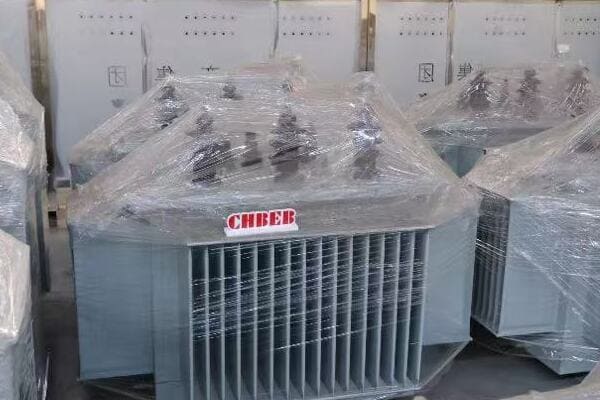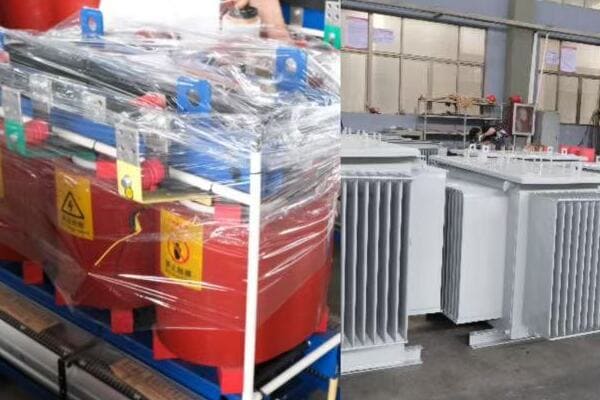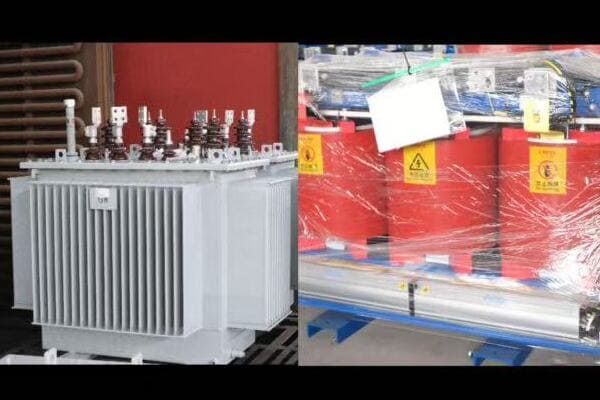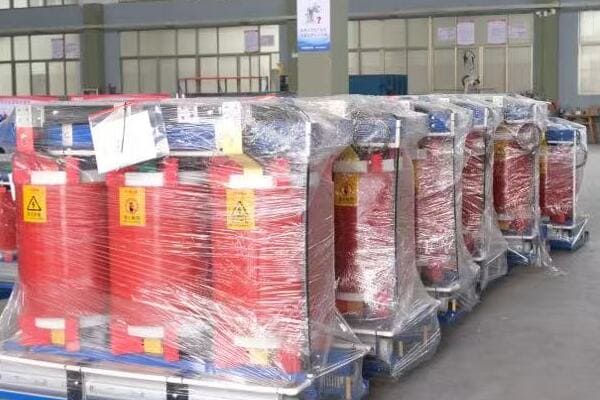How to Select the Right Transformer for Your Project: Voltage Class, Capacity, and Cooling Type?
Have you ever faced project delays or unexpected costs due to a mismatched transformer? Choosing the wrong transformer can lead to serious issues like voltage fluctuations, overheating, or even complete system failure. But how can you ensure you’re making the right choice?
Selecting the right transformer involves determining the correct voltage class, calculating the required capacity (kVA), and choosing the appropriate cooling type. Key factors include matching the voltage class to your power system (e.g., 11kV, 33kV), sizing the capacity based on total load and future growth, and selecting between dry-type and oil-immersed cooling based on installation environment. Additional considerations include tap changers, protection features, and enclosure types. Proper selection ensures optimal performance, energy efficiency, and long-term reliability of your power system.

In this comprehensive guide, I’ll walk you through the step-by-step process of selecting the perfect transformer for your project. Whether you’re planning a new installation or upgrading an existing system, this article will provide you with the knowledge to make informed decisions, avoid costly mistakes, and ensure your power system operates efficiently and reliably for years to come.
Why Transformer Selection Matters in Project Planning?
Have you ever wondered why some power systems run smoothly for decades while others face frequent issues? The answer often lies in the initial transformer selection. But why is this choice so crucial, and what can go wrong if you don’t get it right?
Proper transformer selection is critical in project planning because it directly impacts system reliability, energy efficiency, and long-term operational costs. Choosing the wrong transformer can lead to inadequate power supply, voltage instability, excessive energy losses, premature equipment failure, and safety hazards. Correct selection ensures optimal performance, reduces downtime, minimizes energy waste, and extends the lifespan of both the transformer and connected equipment. It also helps in avoiding costly retrofits or replacements down the line, making it a key factor in project success and cost-effectiveness.

Key Aspects of Transformer Selection Importance
Let’s explore the main reasons why transformer selection is so crucial:
- System Performance and Reliability
- Energy Efficiency and Operational Costs
- Safety and Compliance
- Future-Proofing and Scalability
- Environmental Impact
System Performance and Reliability
Ensuring stable and consistent power supply:
- Proper voltage regulation for sensitive equipment
- Adequate capacity to handle peak loads without overheating
- Matching transformer impedance to system requirements
I recently consulted on a project where a manufacturing plant had frequent production stoppages due to voltage fluctuations. Upon investigation, we discovered that the installed transformer was undersized for the actual load. Replacing it with a correctly sized unit eliminated the issues and significantly improved production efficiency.
Energy Efficiency and Operational Costs
Minimizing losses and maximizing ROI:
- Selection of high-efficiency cores to reduce no-load losses
- Proper sizing to operate in the optimal efficiency range
- Consideration of lifetime energy costs in selection process
During a recent energy audit for a commercial building, we found that replacing an oversized, older transformer with a modern, right-sized unit resulted in annual energy savings of over $10,000. This showcased how proper selection can have a significant impact on long-term operational costs.
Safety and Compliance
Meeting regulatory requirements and ensuring safe operation:
- Selection of appropriate insulation class for the environment
- Consideration of fire safety in dry-type vs. oil-filled selection
- Ensuring compliance with local electrical codes and standards
Here’s a quick overview of safety considerations in transformer selection:
| Aspect | Consideration | Impact |
|---|---|---|
| Insulation Class | Temperature rating | Prevents premature insulation breakdown |
| Cooling Type | Fire risk in location | Influences choice between dry and oil-filled |
| Protection Features | Overload, short-circuit | Prevents catastrophic failures |
| Enclosure Type | Environmental protection | Ensures longevity in harsh conditions |
Future-Proofing and Scalability
Planning for growth and changes:
- Consideration of future load increases in capacity selection
- Selection of transformers with tap changing capabilities for voltage flexibility
- Modular designs for easier upgrades or replacements
Environmental Impact
Minimizing ecological footprint:
- Selection of high-efficiency units to reduce energy waste
- Consideration of biodegradable insulating fluids in oil-filled units
- End-of-life recycling and disposal planning
Key points about the importance of transformer selection:
- It directly impacts system reliability and performance
- Proper selection can lead to significant energy and cost savings
- Safety and compliance depend on correct transformer specifications
- Future-proofing requires consideration of potential system changes
- Environmental factors are increasingly important in selection decisions
In my experience, the consequences of improper transformer selection often don’t become apparent until months or even years after installation. I recall a data center project where the initial transformer selection didn’t account for the harmonic loads generated by the IT equipment. Within a year, the transformer was running hot and inefficiently. The cost of replacement and associated downtime far exceeded the savings from initially choosing a cheaper, less suitable unit.
For example, in a recent renewable energy project, we faced the challenge of selecting transformers for a wind farm with highly variable output. By carefully considering factors like capacity, tap changing capabilities, and environmental protection, we were able to select units that not only handled the current needs but also accommodated future expansion plans. This foresight saved the client from costly upgrades in the near future.
As we move on to discuss the specific steps in transformer selection, remember that each decision in the process can have far-reaching implications for your project’s success. Taking the time to make informed choices at the outset can save you from headaches and expenses down the road.
Step 1 – Determine the Correct Voltage Class?
Have you ever wondered why there are so many different voltage levels in power systems? Choosing the right voltage class for your transformer is crucial, but how do you know which one is appropriate for your project?
Determining the correct voltage class is the first critical step in transformer selection. It involves matching the transformer’s primary voltage to the available power supply and the secondary voltage to your system’s requirements. Common primary voltage classes include 6kV, 11kV, 22kV, and 33kV, while secondary voltages are typically 400V, 415V, or 690V for industrial applications. The choice depends on your local power distribution network, the distance from the power source, and your specific application needs. Selecting the wrong voltage class can lead to inefficiency, safety hazards, or incompatibility with your power system.

Key Considerations in Voltage Class Selection
Let’s explore the main factors to consider when determining the correct voltage class:
- Understanding Voltage Classes
- Primary Voltage Considerations
- Secondary Voltage Requirements
- System Compatibility and Standards
- Future-Proofing and Flexibility
Understanding Voltage Classes
Basics of voltage classification:
- Low Voltage (LV): Up to 1kV
- Medium Voltage (MV): 1kV to 35kV
- High Voltage (HV): Above 35kV
I recently worked on a project where the client was unsure about the voltage class needed. By examining the local utility’s distribution network and the facility’s power requirements, we determined that an 11kV/400V transformer was the optimal choice, ensuring seamless integration with both the grid and the facility’s equipment.
Primary Voltage Considerations
Matching the incoming power supply:
- Common primary voltages: 6kV, 11kV, 22kV, 33kV
- Factors influencing choice: local grid infrastructure, distance from substation
- Coordination with utility company for available supply voltage
During a recent industrial park development, we had to work closely with the local utility to determine the most suitable primary voltage. Given the park’s size and power demands, we opted for 33kV primary voltage, which allowed for efficient power distribution across the entire site.
Secondary Voltage Requirements
Meeting end-use voltage needs:
- Typical secondary voltages: 400V, 415V, 690V
- Consideration of end-use equipment specifications
- Voltage drop calculations for large facilities
Here’s a quick reference for common voltage class combinations:
| Primary Voltage | Secondary Voltage | Typical Application |
|---|---|---|
| 11kV | 400V | Commercial buildings, small industries |
| 33kV | 400V/690V | Large industrial complexes, data centers |
| 22kV | 415V | Medium-sized manufacturing facilities |
| 6kV | 400V | Older industrial installations |
System Compatibility and Standards
Ensuring compliance and interoperability:
- Adherence to local electrical codes and standards
- Compatibility with existing switchgear and protection systems
- Consideration of grounding systems and neutral points
Future-Proofing and Flexibility
Planning for potential changes:
- Consideration of future expansion or load increases
- Selection of transformers with multiple voltage taps
- Evaluation of potential changes in local grid infrastructure
Key points about voltage class selection:
- It must match both the supply voltage and system requirements
- Primary voltage is often dictated by the local power distribution network
- Secondary voltage should meet the needs of end-use equipment
- Compliance with local standards is crucial
- Future flexibility should be considered in the selection process
In my experience, the importance of correct voltage class selection often becomes apparent in retrofit or expansion projects. I recall a case where a factory wanted to expand its production capacity. The existing 6kV system was at its limit, and upgrading to 11kV not only accommodated the new loads but also improved overall efficiency and provided room for future growth.
For example, in a recent renewable energy project, we had to select transformers for a solar farm located far from the nearest substation. By opting for a higher primary voltage class (33kV instead of 11kV), we were able to minimize transmission losses over the long distance, significantly improving the project’s overall efficiency and economic viability.
As we move on to discuss load calculation and capacity selection, remember that the voltage class you choose sets the foundation for your entire power system. It’s a decision that impacts everything from equipment compatibility to long-term operational costs.
Step 2 – Calculate Load and Choose the Right Capacity (kVA)?
Have you ever wondered why some transformers hum loudly or feel hot to the touch? Often, it’s because they’re either overloaded or significantly underutilized. But how do you determine the right size for your needs?
Calculating the correct load and choosing the right capacity (kVA) is crucial for optimal transformer performance. This involves summing up the power requirements of all connected equipment, considering load diversity factors, and accounting for future growth. Typical capacities range from 25kVA for small residential applications to 2500kVA or more for large industrial settings. Oversizing leads to unnecessary costs and inefficiencies, while undersizing risks overheating and premature failure. A properly sized transformer operates efficiently, handles peak loads without stress, and provides room for future expansion.

Key Aspects of Load Calculation and Capacity Selection
Let’s explore the main factors in determining the right transformer capacity:
- Understanding kVA Ratings
- Load Calculation Methods
- Diversity and Utilization Factors
- Future Growth Considerations
- Efficiency and Loading Optimization
Understanding kVA Ratings
Basics of transformer capacity:
- kVA (kilovolt-amperes) as a measure of apparent power
- Relationship between kVA, voltage, and current
- Common kVA ratings: 25, 50, 100, 250, 500, 1000, 2500 kVA
I recently worked on a project for a small office building where we needed to select a transformer. By calculating the total connected load and applying appropriate diversity factors, we determined that a 250 kVA transformer would be optimal, providing sufficient capacity for current needs and some room for future expansion.
Load Calculation Methods
Determining total power requirements:
- Summing up nameplate ratings of all connected equipment
- Consideration of motor starting currents and inrush loads
- Use of load profiling for variable demand applications
During a recent industrial facility upgrade, we conducted a detailed load study using power logging equipment. This real-world data allowed us to accurately size the new transformer, avoiding the pitfalls of relying solely on nameplate ratings.
Diversity and Utilization Factors
Accounting for real-world usage patterns:
- Application of diversity factors for non-coincident loads
- Consideration of utilization factors for equipment not always at full load
- Industry-specific guidelines for diversity factors
Here’s a simplified guide for applying diversity factors:
| Application | Diversity Factor Range | Example |
|---|---|---|
| Residential | 0.3 – 0.4 | 100 homes × 5 kVA = 500 kVA × 0.35 = 175 kVA transformer |
| Commercial | 0.5 – 0.7 | Office equipment 200 kVA × 0.6 = 120 kVA |
| Industrial | 0.7 – 0.9 | Factory machines 1000 kVA × 0.8 = 800 kVA |
Future Growth Considerations
Planning for increased power needs:
- Typical growth factors: 15-25% additional capacity
- Consideration of known expansion plans
- Balance between current efficiency and future flexibility
Efficiency and Loading Optimization
Maximizing transformer performance:
- Understanding efficiency curves at different load levels
- Optimal loading typically between 40-60% of rated capacity
- Consideration of energy costs in sizing decisions
Key points about load calculation and capacity selection:
- Accurate load calculation is crucial for proper sizing
- Diversity and utilization factors help in realistic capacity estimation
- Future growth should be factored into the selection process
- Optimal loading improves efficiency and transformer lifespan
- Oversizing can be as problematic as undersizing
In my experience, the importance of accurate load calculation and proper capacity selection cannot be overstated. I recall a project where a data center initially requested a 2000 kVA transformer based on the sum of all equipment ratings. After a detailed analysis of actual usage patterns and applying appropriate diversity factors, we determined that a 1500 kVA unit would be more than sufficient. This not only saved on initial costs but also resulted in a more efficiently operating system.
For example, in a recent renewable energy project, we faced the challenge of sizing transformers for a wind farm with highly variable output. By analyzing historical wind data and generation patterns, we were able to select transformer capacities that optimally balanced the peak output capabilities with typical generation profiles. This approach ensured efficient operation across a wide range of conditions while avoiding excessive oversizing.
As we move on to discuss cooling type selection, remember that the capacity you choose directly impacts not only the transformer’s performance but also its efficiency, lifespan, and overall system reliability. Careful consideration at this stage can lead to significant long-term benefits in both operational performance and cost-effectiveness.
Step 3 – Choose Cooling Type: Dry Type vs Oil-Immersed?
Have you ever wondered why some transformers are filled with oil while others aren’t? The choice between dry-type and oil-immersed transformers is crucial, but how do you know which is right for your project?
Choosing between dry-type and oil-immersed transformers depends on factors like installation environment, safety requirements, and maintenance considerations. Dry-type transformers, using air for cooling, are preferred for indoor installations, areas with fire safety concerns, or where minimal maintenance is desired. They’re commonly used in commercial buildings, hospitals, and data centers. Oil-immersed transformers, which use oil for insulation and cooling, are more suitable for outdoor installations, higher capacities, and harsh environments. They’re often used in industrial settings and utility applications. The choice impacts factors like fire safety, environmental risks, noise levels, and overall system efficiency.

Key Considerations in Cooling Type Selection
Let’s explore the main factors to consider when choosing between dry-type and oil-immersed transformers:
- Basic Differences and Operating Principles
- Environmental and Safety Considerations
- Capacity and Efficiency Factors
- Installation and Maintenance Requirements
- Cost Considerations and Lifespan
Basic Differences and Operating Principles
Understanding the fundamentals:
- Dry-type: Uses air and solid insulation materials
- Oil-immersed: Uses mineral or synthetic oil for insulation and cooling
- Heat dissipation methods in each type
I recently worked on a project for a new hospital wing where fire safety was a top priority. We opted for dry-type transformers despite their higher initial cost. The peace of mind from reduced fire risk and the elimination of potential oil leaks made it a clear choice for this sensitive environment.
Environmental and Safety Considerations
Balancing safety and environmental impact:
- Fire risk: Dry-type generally safer in fire-sensitive areas
- Environmental concerns: Oil-immersed units pose potential leak risks
- Noise levels: Dry-type often quieter, suitable for indoor installations
- Pollution risk: Oil-immersed require containment measures
During a recent industrial project near a water source, we carefully considered the environmental implications. Despite the higher cost, we chose dry-type transformers to eliminate any risk of oil leaks contaminating the nearby water body.
Capacity and Efficiency Factors
Matching cooling type to power needs:
- Capacity ranges: Dry-type typically up to 35 MVA, oil-immersed can go higher
- Efficiency: Oil-immersed generally more efficient, especially at higher capacities
- Overload capability: Oil-immersed usually better at handling short-term overloads
Here’s a quick comparison of capacity and efficiency factors:
| Factor | Dry-Type | Oil-Immersed |
|---|---|---|
| Typical Capacity Range | Up to 35 MVA | Up to 100+ MVA |
| Efficiency at Rated Load | 97-98% | 98-99% |
| Short-Term Overload Capability | Limited | Better |
| Cooling Effectiveness | Good | Excellent |
Installation and Maintenance Requirements
Considering long-term operational factors:
- Space requirements: Dry-type often more compact
- Weight: Oil-immersed typically heavier, may require special foundations
- Maintenance: Dry-type generally requires less maintenance
- Lifespan: Oil-immersed often have longer operational life with proper maintenance
Cost Considerations and Lifespan
Balancing initial investment with long-term value:
- Initial cost: Dry-type usually more expensive upfront
- Operational costs: Oil-immersed may have lower losses, reducing energy costs
- Maintenance costs: Dry-type generally lower due to simpler maintenance
- Lifespan: Oil-immersed can last longer with proper maintenance
Key points about cooling type selection:
- Environmental and safety factors often drive the choice in sensitive locations
- Capacity requirements can limit options, especially for very large power needs
- Efficiency and overload capability tend to favor oil-immersed for heavy industrial use
- Installation environment significantly impacts the decision
- Long-term costs and maintenance needs should be considered alongside initial investment
In my experience, the choice between dry-type and oil-immersed transformers often involves balancing multiple factors. I recall a project for a data center where we initially leaned towards oil-immersed transformers for their higher efficiency. However, after considering the indoor installation requirements, fire safety concerns, and the client’s preference for minimal maintenance, we ultimately chose dry-type units. This decision aligned better with the overall project goals and operational requirements.
For example, in a recent renewable energy project, we faced the challenge of selecting transformers for a wind farm in a coastal area. The harsh environment, with salt spray and high humidity, initially pointed towards oil-immersed units for their better sealing. However, environmental concerns about potential oil leaks led us to choose specially designed dry-type transformers with enhanced environmental protection. This solution balanced performance needs with environmental responsibility.
As we move on to discuss optional factors like tap changers and protection features, remember that the cooling type you choose sets the foundation for many other aspects of your transformer’s performance and maintenance requirements. It’s a decision that impacts not just the transformer itself, but the entire system it serves.
Optional Factors: Tap Changers, Protection, and Enclosure?
Have you ever wondered why some transformers seem to have extra components or special housings? These optional features can significantly enhance performance and safety, but how do you know which ones you need?
Optional factors in transformer selection include tap changers for voltage adjustment, protection devices for safety, and specialized enclosures for environmental adaptation. On-Load Tap Changers (OLTC) allow voltage adjustment during operation, crucial for maintaining stable output in fluctuating conditions. Protection features like Buchholz relays, temperature monitors, and pressure relief devices enhance safety. Enclosure types (e.g., IP23, IP54, IP65) protect against environmental factors like dust and moisture. These options are selected based on specific project needs, operational requirements, and installation environments to optimize performance, safety, and longevity.

Key Optional Features to Consider
Let’s explore the main optional factors that can enhance your transformer’s functionality:
- Tap Changers: OLTC vs NLTC
- Protection Devices and Monitoring Systems
- Enclosure Types and Environmental Adaptation
- Special Cooling Arrangements
- Communication and Smart Grid Integration
Tap Changers: OLTC vs NLTC
Voltage regulation capabilities:
- On-Load Tap Changers (OLTC): Adjust voltage while energized
- No-Load Tap Changers (NLTC): Require de-energizing for adjustment
- Applications: OLTC for dynamic loads, NLTC for stable environments
I recently worked on a project for a manufacturing plant with highly variable loads. We implemented an OLTC system which allowed real-time voltage adjustments, significantly improving power quality and equipment performance throughout the facility.
Protection Devices and Monitoring Systems
Enhancing safety and reliability:
- Buchholz relay for gas accumulation detection
- Temperature monitoring systems
- Pressure relief devices
- Oil level indicators and moisture sensors
During a recent substation upgrade, we integrated advanced monitoring systems including fiber optic temperature sensors and online dissolved gas analysis. This comprehensive approach allowed for real-time health monitoring and predictive maintenance, significantly reducing the risk of unexpected failures.
Enclosure Types and Environmental Adaptation
Protecting against environmental factors:
- IP ratings: IP23, IP54, IP65 for different levels of protection
- Special coatings for corrosive environments
- Seismic-rated designs for earthquake-prone areas
Here’s a quick guide to common IP ratings:
| IP Rating | Protection Level | Typical Application |
|---|---|---|
| IP23 | Basic protection against tools and rain | Indoor substations |
| IP54 | Dust protected, splash resistant | Outdoor industrial settings |
| IP65 | Dust tight, water jet resistant | Harsh environments, coastal areas |
Special Cooling Arrangements
Adapting to challenging environments:
- Forced air cooling for compact installations
- Water-cooled systems for extreme conditions
- Directed oil flow designs for high-capacity units
Communication and Smart Grid Integration
Preparing for the future of power systems:
- SCADA system compatibility
- Smart grid ready features
- Remote monitoring and control capabilities
Key points about optional transformer features:
- Tap changers significantly enhance voltage regulation capabilities
- Protection devices are crucial for safety and long-term reliability
- Enclosure selection is vital for environmental adaptation
- Special cooling arrangements can extend operational limits
- Communication features enable integration with modern grid systems
In my experience, carefully selecting these optional features can dramatically improve a transformer’s performance and lifespan. I recall a project for a solar farm where we initially considered standard transformers. However, by opting for units with OLTCs and advanced monitoring systems, we were able to handle the variable output of the solar panels much more effectively, improving overall grid stability and energy yield.
For example, in a recent project for a coastal industrial facility, we faced challenges with corrosive sea air. By selecting transformers with IP65-rated enclosures and special corrosion-resistant coatings, we significantly extended the expected lifespan of the units, justifying the higher initial investment through reduced long-term maintenance and replacement costs.
As we move on to discuss the final checklist before ordering, remember that these optional features, while sometimes overlooked, can be the key to optimizing your transformer’s performance for your specific application and environment.
Transformer Selection Checklist Before Ordering?
Are you feeling overwhelmed by all the factors to consider when selecting a transformer? It’s easy to miss crucial details, but what if you had a comprehensive checklist to ensure you’ve covered all bases before placing your order?
A comprehensive transformer selection checklist should include: voltage class (primary and secondary), capacity (kVA) based on load calculations, cooling type (dry or oil-immersed), tap changer requirements (OLTC or NLTC), protection features needed, enclosure type and IP rating, special environmental considerations, efficiency requirements, physical dimensions and weight limits, and any specific standards or certifications required. This checklist ensures all critical factors are considered, reducing the risk of ordering an unsuitable transformer. It also helps in comparing different options and communicating requirements clearly to manufacturers or suppliers.
Key Elements of a Transformer Selection Checklist
Let’s break down the essential items to check before finalizing your transformer order:
- Electrical Specifications
- Physical and Environmental Considerations
- Safety and Protection Features
- Efficiency and Performance Requirements
- Documentation and Certification Needs
Electrical Specifications
Ensuring the basics are covered:
- Primary and secondary voltage levels
- Capacity (kVA) rating
- Frequency (50 Hz or 60 Hz)
- Vector group and phase displacement
- Impedance percentage
I recently used this checklist for a commercial building project. By methodically going through each electrical specification, we caught a mismatch in the vector group that could have caused serious issues if overlooked. This experience reinforced the importance of a thorough checklist.
Physical and Environmental Considerations
Adapting to installation constraints:
- Dimensions and weight limits
- Cooling type (dry-type or oil-immersed)
- Ambient temperature range
- Altitude of installation site
- Indoor or outdoor installation
During a recent project in a high-altitude location, the checklist reminded us to consider altitude derating factors. This crucial detail ensured we selected a transformer that could perform efficiently in the thin air environment.
Safety and Protection Features
Enhancing reliability and safety:
- Required protection devices (e.g., Buchholz relay, temperature monitors)
- Enclosure type and IP rating
- Fire safety requirements (especially for indoor installations)
- Noise level limitations
Here’s a quick reference for common protection features:
| Feature | Purpose | Typically Used In |
|---|---|---|
| Buchholz Relay | Detect gas accumulation | Oil-immersed transformers |
| Temperature Monitor | Prevent overheating | All types |
| Pressure Relief Device | Protect against internal pressure | Oil-immersed transformers |
| Sudden Pressure Relay | Detect rapid pressure changes | Large oil-immersed units |
Efficiency and Performance Requirements
Optimizing long-term operation:
- Efficiency at different load levels
- No-load and full-load losses
- Overload capacity requirements
- Tap changer type (if needed): OLTC or NLTC
- Harmonic handling capability (K-factor for non-linear loads)
Documentation and Certification Needs
Ensuring compliance and quality:
- Required test reports and certifications
- Compliance with specific standards (e.g., IEC, ANSI, IEEE)
- Warranty terms and conditions
- Installation and maintenance manual requirements
Key points for the transformer selection checklist:
- Electrical specifications form the foundation of the selection process
- Physical and environmental factors are crucial for proper installation and operation
- Safety features should be carefully considered based on the application
- Efficiency requirements impact long-term operational costs
- Proper documentation ensures compliance and quality assurance
In my experience, using a comprehensive checklist has prevented numerous potential issues. I recall a project where we almost overlooked the harmonic handling capability for a data center transformer. The checklist prompted us to specify a K-rated transformer, which was crucial given the non-linear loads typical in data center environments.
For example, in a recent renewable energy project, the checklist helped us identify the need for special corrosion-resistant coatings for transformers installed in a coastal wind farm. This detail, which might have been overlooked without a systematic approach, significantly extended the expected lifespan of the units in the harsh marine environment.
As we conclude our guide on transformer selection, remember that this checklist is your final safeguard against overlooking critical details. It ensures that all the careful considerations we’ve discussed throughout this article are properly accounted for in your final transformer specification.
Conclusion
Selecting the right transformer involves careful consideration of voltage class, capacity, cooling type, and optional features. By following a systematic approach and using a comprehensive checklist, you can ensure your transformer meets all project requirements, optimizing performance, efficiency, and longevity. Remember, proper selection is key to reliable and cost-effective power distribution.
Recent Post
Quick Message
Request A free quote
We'd like to work with you
- +86 15558785111
- chbebgroup@chbebpower.com
- +86 15558785111
What We Do
CHINA BEI ER BIAN (CHBEB) GROUP, with 218 million in registered capital, originated from Beijing Beierbian Transformer Group. Headquartered in Beijing for R&D, it operates major production bases in Nanjing and Yueqing, producing high-quality products.
Latest Post
Latest Product
Contact Us
- +86 15558785111
- chbebgroup@chbebpower.com
- +86 15558785111
BeiJing
No 3,RongJing East Road,BeiJing Economic Technological Development Area,BeiJing,China
JiangSu
No 7️Xiangfeng Road,Jiangning,NanJing,JiangSu,China
WenZhou
No.211, Wei 16 Road, Industrial Zone, Yueqing, Wenzhou, Zhejiang, China.
XiangYang Industrial Zone ,YueQing,WenZhou,ZheJiang,China


